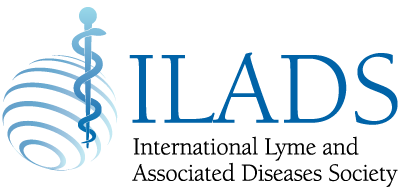Thermography for Early Breast Cancer Detection
About Thermography
What is thermography?
Thermography - also known as DITI, Digital Infrared Thermal Imaging, is a physiological test that records the patterns of infrared heat from your body. It is a painless, non-invasive, and non-contact medical imaging process using an infrared scanning camera. There is no radiation, contact, compression, or exposure to substances for the imaging.
Thermography to Detect Breast Cancer
Breast thermography is a way of monitoring breast health over time. Each person has a unique thermal pattern, like a fingerprint that should remain stable throughout life. The patterns are monitored over time for changes or activities that may indicate developing pathology. Thermography's role in breast screening is to help in early detection and monitoring of abnormal physiology, and the establishment of risk factors for the development of the disease.
Mammograms are by far the most well-known screening method for breast cancer. Mammography uses X-ray images to detect calcifications in the breast tissue. Structural tests such as mammograms are designed to see lumps, calcifications, densities. Thermal imaging can detect changes caused by angiogenesis, nitric oxide, estrogen dominance, lymph abnormality, inflammatory processes including inflammatory breast disease.
In contrast, thermography detects physiological changes in breast tissue, rather than structural changes. Specifically, thermography detects changes in surface temperature and blood flow that are can indicate abnormal cell activity and tumor growth. Once a tumor reaches a certain size, it must start generating its own blood supply. This, in turn, generates heat, which is detectable with thermography.
With breast thermography, there are two initial visits, usually 3 months apart. The purpose of the two studies is to establish the baseline pattern for each patient to which all future thermograms are compared to monitor stability. With continued breast health, the thermograms remain identical to the initial study. Changes may be identified on follow-up studies that could represent physiological differences within the breast that warrant further investigation.
When used with other screening methods such as ultrasounds, mammograms, MRI, or clinical exams the best evaluation of breast health can be made.
Thermography Used For More Than Breast Cancer Detection
Thermography is widely known for its use in breast imaging but is also utilized for the whole body in a wide variety of applications. Thermography can demonstrate thermal patterns in skin temperature that may be normal or which may indicate pain, injury, disease, or other abnormality. If abnormal thermal patterns are identified relating to a specific region of interest or function, clinical correlation and further investigation may be necessary to aid your health care provider in diagnosis and treatment.
Thermography can aid in detecting and monitoring a number of diseases and physical injuries. DITI is valued for its high sensitivity to pathology in the vascular, muscular, neural, and skeletal systems. It is unique in its ability to show physiologic change and metabolic processes (it does not see structure). As such, thermography can be very informative and a complementary procedure to other diagnostic tools. It can provide valuable information for the clinician.
Patient Preparation Sheet
On the day of your appointment, do not:
-
Use any skin products (lotions, powders, oils, etc.) on areas being scanned including underarms
-
Shave any area being imaged
-
Exercise, or physical stimulation; examples: Physical Therapy, chiropractic, acupuncture, electromyography, massage
-
Have hot or cold drinks for 2 hours before your appointment (room temp drinks are fine). Also, avoid caffeine for 2 hours before imaging. If imaging the face, refrain from excessive chewings, such as gum for 2 hours before imaging.
-
Sit directly in the airflow of air conditioning, heat, or room air fan in a car or other environment; please feel free to use but avoid directly on you. Also do not use a car seat heater/seat fan.
-
If you are sunburned you will need to reschedule your appointment.
-
A warm, not hot shower may be taken, no closer than 2 hrs. to your appointment. Please keep in mind cold water should be avoided as well.
-
If your hair falls below your neck it should be pinned up for the imaging. For Full Body or Upper Half imaging of the head/neck, the hair will need to be completely off the face & neck.
It is best to wear loose-fitting clothing. -
Wait 3 months post-surgery or biopsy (if involving area to be imaged), and 6 months post-radiation therapy to schedule imaging.
-
Wait one week after a mammogram before having a breast thermogram.
What to Expect at Your Thermography Appointment
The procedure is non-invasive, with no contact, no radiation, and is FDA approved.
Disrobing: clothing is removed where the area is to be scanned and a temporary medical gown is provided. Inform your thermographer of any skin lesions as the inflammation may cause a false-positive result.
Thermography is performed by a female certified thermographer and is completely private. There are no risks and no side effects.
Appointment times can range from 30 min. to one hour, depending on the type of imaging.
You are welcome to bring a companion to be present during the exam.
_________________________________
This article is for informational purposes only. It is not, nor is it intended to be, a substitute for professional medical advice, diagnosis, or treatment and should never be relied upon for specific medical advice.


